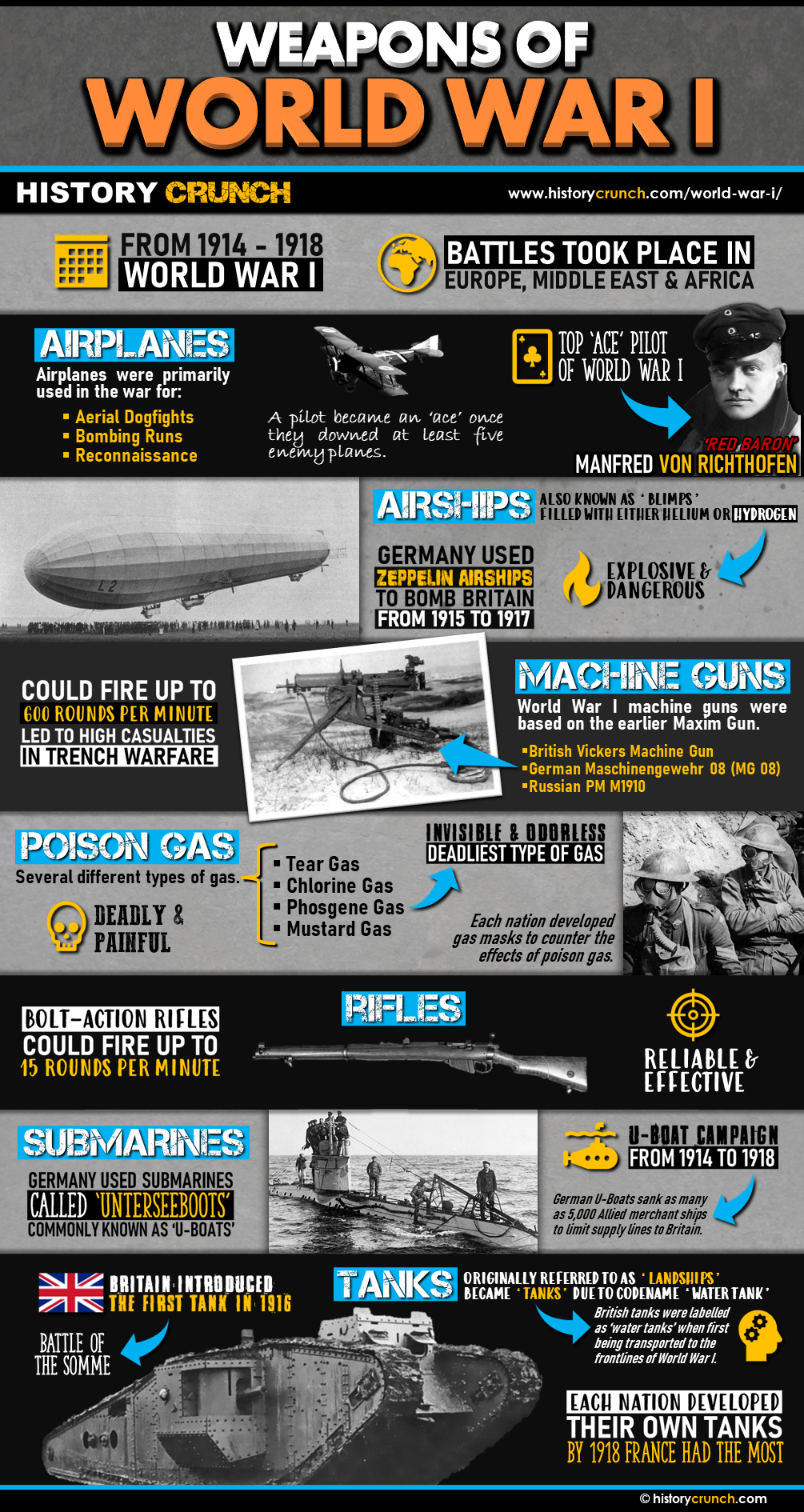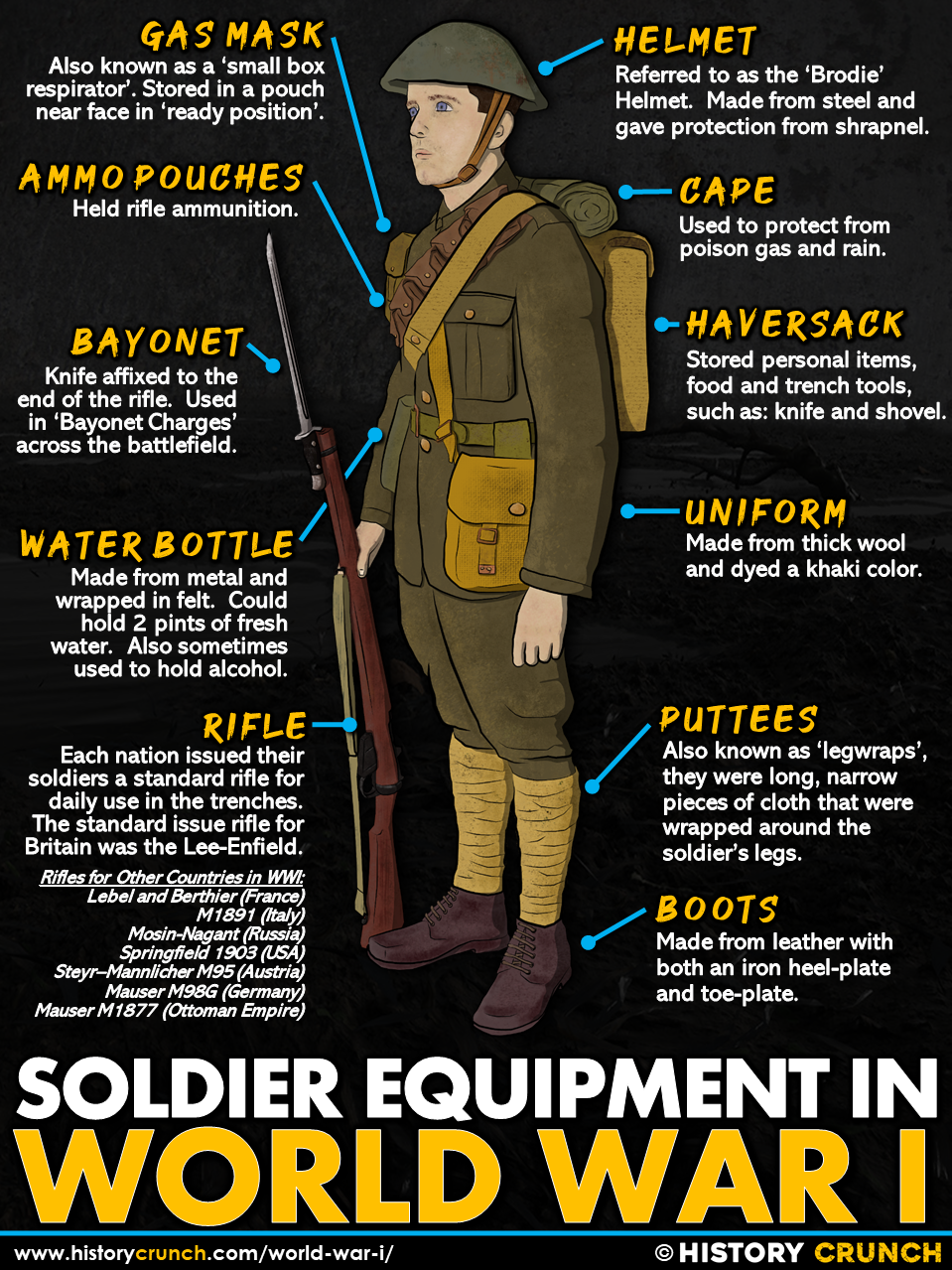WEAPONS OF WORLD WAR I
Weapons and technology played a key role in the events of World War I. For instance, World War I is often characterized by the stalemate conditions created due to trench warfare. This was especially evident along the trenches of the Western Front. As such, the major powers of World War I introduced and made use of weapons in an effort to end the stalemate conditions. For example, some of the most important weapons of World War I include: airplanes, airships, machine guns, poison gas, rifles, submarines and tanks. World War I was a deadly conflict as shown by the millions of military and civil casualties it caused. The large number of casualties was the result, in part, of the development and use of weaponry that took place during the war.
Click on the links below to read more detailed information about each of the following weapons from World War I:
CITE THIS ARTICLEAUTHOR
|
|


